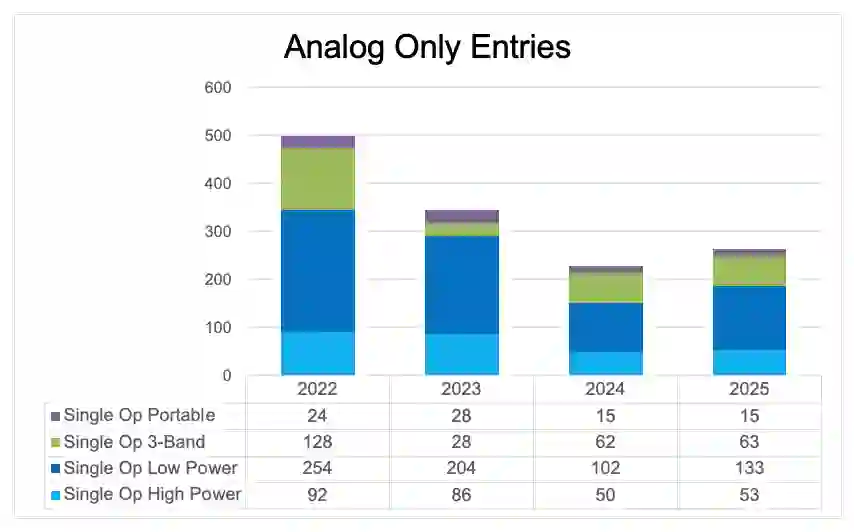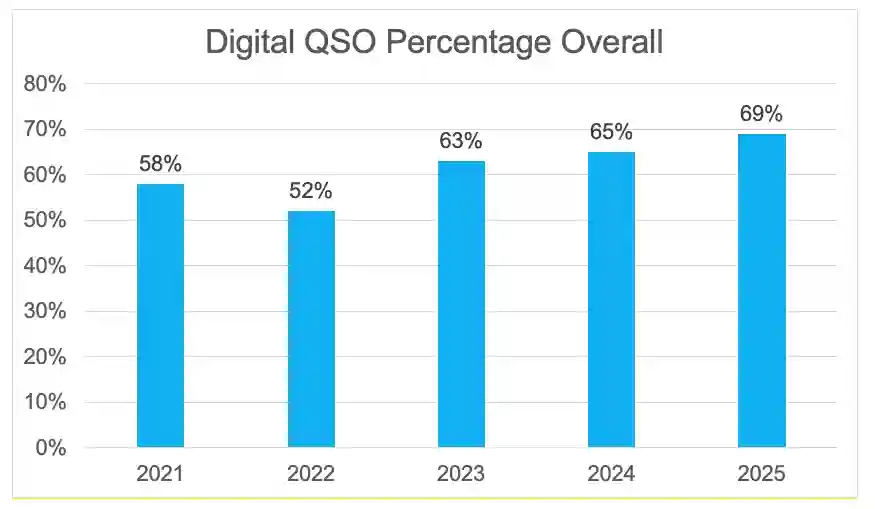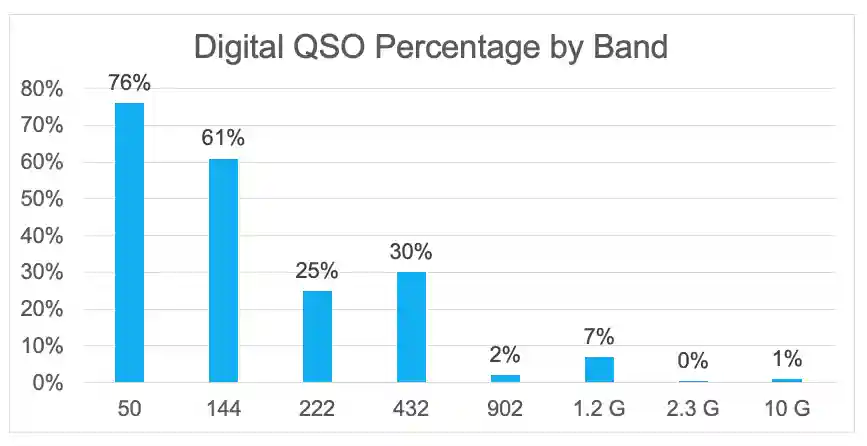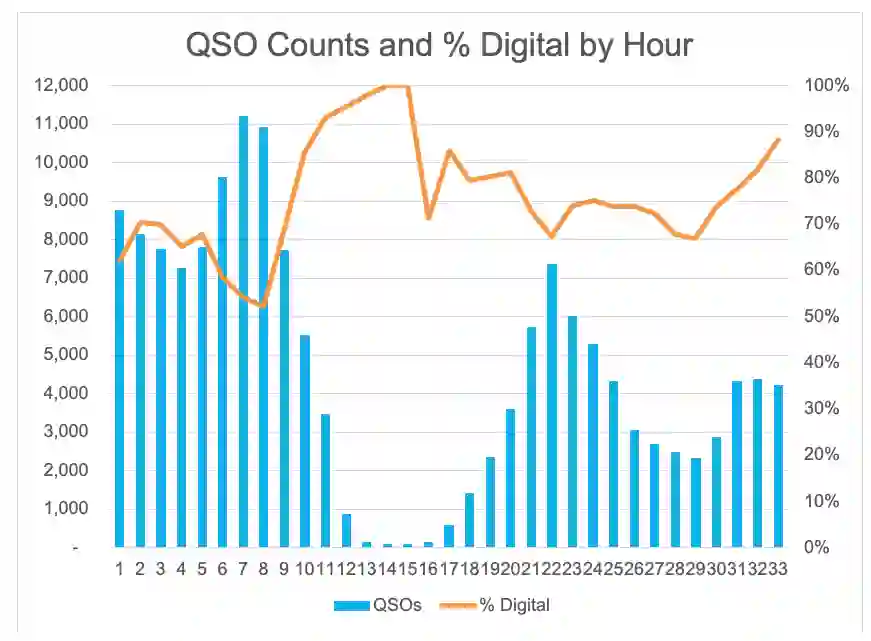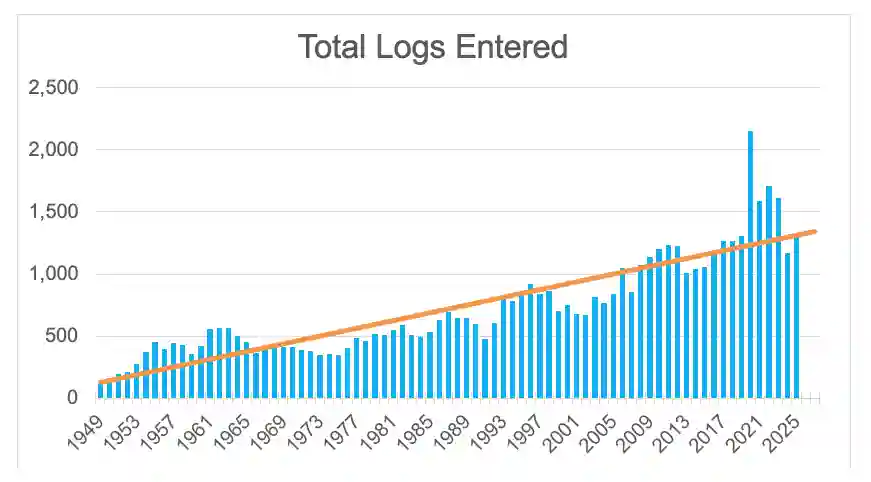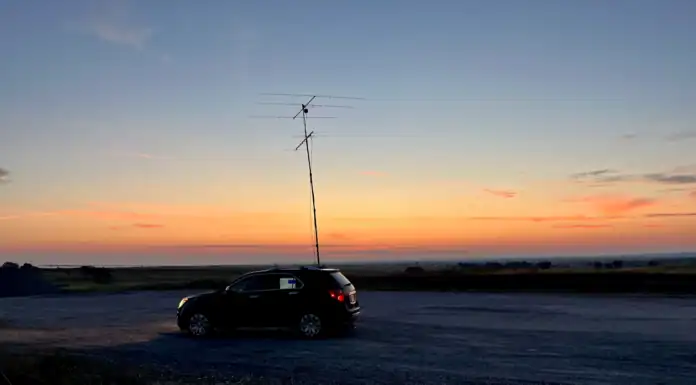So far, I’ve written the ARRL VHF Contest Full Results articles for the June and September contests. The 2025 article is my third year compiling the June results and analyzing the various numbers. Here’s the process that’s used, along with a few insights. Hopefully, this will motivate you to submit your logs and read the results.
VHF Contest Raw Scores
The early scores posted on the ARRL Contest webpage are the raw scores. This webpage lists all the logs submitted and the scores they report. It should provide a good estimate of the rankings in each category.
VHF Contest Log Checking
Next up is log checking, which is quite an intensive process. It involves comparing every QSO in each log and matching it to the other station’s log. It can identify incorrect call signs, wrong grids, and even missing QSOs. The issues found are then used to determine penalties and deductions from QSO counts and multipliers. Duplicate QSOs are also detected, but no penalties are applied.
Certainly, computers handle most of the log-checking work. However, a human log-checker carefully reviews the results, investigating and addressing any anomalies as appropriate. John Kalenowski, K9JK, has been the guy working on the contests I’ve written about.
At this point, the final results are tallied. That seldom results in changed rankings, but it can and does happen.
For more details, see my deep dive into my own log and how the log checking process worked at Log-Checking Reports — VHF Contests and Digital Modes. You can find your own log checking reports on the ARRL Contests website.
VHF Contest Soapbox and 3830scores.com
For the results writer, finding stories to share about the contest can be a real challenge. Every operator has the chance to tell their own story on the ARRL Soapbox website, which includes posting photos. Please take the time to take pictures during the contest and write up a few notes on the highs, lows, and fun you had.
Another source of stories is the 3830scores.com website. Here, you can share your story and post your scores immediately, giving you an idea of how well you did even before the raw scores are posted.
Assembling the Scores – Writing the Narrative
Here, it’s all about recognizing the winners and the top ten in each category. I try to see how they may have improved their rankings from the previous year and whether scores have increased or not, mainly based on propagation. I also review the Soapbox and 3830 comments to check if the winner shared a story about their operation, and typically add that to the results article. I further compare the number of logs submitted year over year to see if the contest is growing or shrinking.
VHF Contest Analysis
This is my favorite part, where I try to determine what’s happening not only in the current year contest but also in the historical results. What are the trends? Year-to-year is the easiest to examine, but I also try to determine the long-term trends. For example, how are the analog-only categories faring? Or, what’s been happening since the stay-at-home orders in 2020 ramped up participation? And, of course, several graphs are just too good to miss — even if they don’t provide much new insight.
June 2025 VHF Contest Highlights
You can get a glimpse of some of the highlights below. These charts are meant to provide some insights into contest participation across the bands, along with the use of digital modes.
Submit Your Contest Logs — Write a Soapbox Entry — Take a Photo or Two
There were 1,296 logs submitted for the June VHF Contest. Additionally, 484 reports were posted on 3830scores.com. Surprisingly, of those 3830 reports, 26 stations did not submit their logs to the contest. I asked them why. Of those who responded, most said they forgot or didn’t have enough contacts to make it worthwhile. However, it’s all about supporting the contest and helping with the log checking process.
I’ll also note that log checking identified 7,459 calls in the submitted logs. Geez, just imagine the participation levels if only a fraction of those stations submitted their logs. As a side note, the record participation was 2,148 in the 2020 lockdown. Since 2013, the typical number of logs has been around 1,100. See the chart below.
The full results article, including stories and photos, can be found at ARRL June 2025 VHF Contest Full Results. Also, check out the ARRL September 2024 VHF Contest Full Results.
Bonus Content — Spotted 6 Meter QSOs Hour-by-Hour
One of the things I started wondering was how the contest developed over the hours on six meters. To catch a glimpse, I checked the DXmaps.com database. I selected each hour of the contest and displayed the QSO map. That shows only the spotted 6 meter QSOs, not all the contest QSOs. I then put the maps together into a video. It definitely shows how the propagation developed over the contest weekend.
That’s how a VHF contest full results article comes together. Let me know if you have any questions or comments. For the next contest, take some photos and tell us about your operation. And don’t forget to submit your log!

